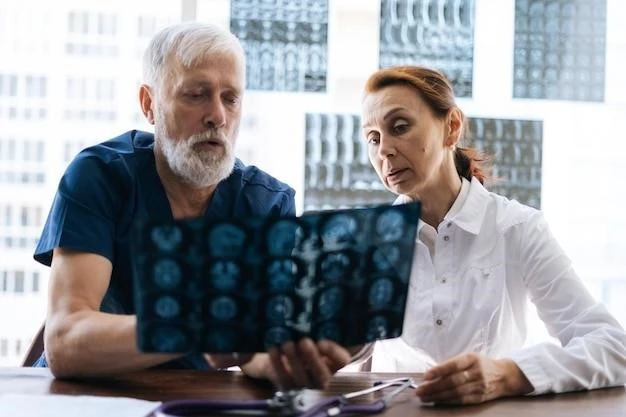Overview of Myotonia Mental Retardation Skeletal Anomalies
An in-depth look at a genetic neuromuscular disorder involving myotonia, skeletal anomalies, and mental retardation in affected individuals.
Definition and Characteristics
An examination of individuals affected by a rare syndrome characterized by myotonia, mental retardation, skeletal anomalies, and short stature, demonstrating autosomal recessive inheritance and myotonia as a prominent symptom.

Genetic Basis of Myotonia Congenita
An exploration of Myotonia Congenita, a neuromuscular channelopathy affecting skeletal muscle fibers, characterized by myotonia as a hallmark symptom and potential genetic inheritance patterns.
Neuromuscular Channelopathy
Neuromuscular channelopathy refers to a group of genetic disorders affecting the function of ion channels in striated muscle fibers, leading to conditions like myotonia, where muscle relaxation is delayed after contraction due to altered ion channel activity. These anomalies can impact muscle function and present as stiffness, cramps, or muscle hypertrophy.
Inheritance Patterns
An examination of the autosomal recessive inheritance pattern observed in individuals with myotonia, mental retardation, skeletal anomalies, and short stature, highlighting the familial aggregation of symptoms in affected siblings of non-consanguineous parents.
Clinical Presentation of the Syndrome
Patients typically exhibit a unique constellation of symptoms, including myotonia, skeletal anomalies, mental retardation, and short stature. These individuals may present with a variety of physical and cognitive challenges.
Symptoms in Children
In children, the syndrome manifests with a unique set of symptoms including myotonia, skeletal anomalies, mental retardation, and short stature. These individuals may experience challenges such as delayed development and unusual facial and ocular abnormalities.
Features in Adults
Adults affected by the syndrome showcase a range of distinctive features, including myotonia, skeletal anomalies, mental retardation, short stature, ocular abnormalities, and facial dysmorphisms. These individuals may experience difficulties in gait, muscle stiffness, and cognitive functions.
A careful evaluation is essential to diagnose the syndrome, considering myotonia, mental retardation, skeletal anomalies, and short stature. Differential diagnosis may involve distinguishing these features from other similar genetic or neuromuscular conditions.
Diagnosis and Differential Diagnosis
A detailed assessment is crucial for diagnosing the syndrome, considering the unique combination of myotonia, mental retardation, skeletal anomalies, and short stature. Differential diagnosis may involve distinguishing these specific features from various other genetic or neuromuscular conditions that share similar symptoms.
Genetic Testing Advancements
Recent advancements in genetic testing have enabled more precise diagnosis of the syndrome through identifying specific genetic markers associated with myotonia, mental retardation, skeletal anomalies, and short stature. These advancements have improved the accuracy and efficiency of diagnosing rare genetic disorders.
Management strategies may include medications and therapies aimed at alleviating myotonia symptoms and improving quality of life. Lifestyle modifications focusing on physical activity and nutrition can complement medical interventions in managing the condition.
Management strategies may include medications and therapies aimed at alleviating myotonia symptoms and improving quality of life. Lifestyle modifications focusing on physical activity and nutrition can complement medical interventions in managing the condition.
Treatment Options for Myotonia
Lifestyle modifications can complement medical treatment for myotonia, including physical therapy to manage muscle stiffness and improve mobility. Additionally, dietary adjustments and regular exercise can help individuals with myotonia maintain muscle function and overall health.
A deeper exploration of associated syndromes, including Richieri Costa-da Silva Syndrome with progressive myotonia, short stature, and skeletal anomalies, along with KBG Syndrome characterized by skeletal abnormalities, unusual facial features, and intellectual disability.
An exploration of Richieri Costa-da Silva Syndrome, a genetic myotonic disorder characterized by progressive myotonia, short stature, skeletal anomalies, and peculiar ocular and facial abnormalities, along with a comparison to other related syndromes.

Associated Syndromes and Disorders
Exploring KBG Syndrome, a rare genetic disorder characterized by a distinct combination of unusual facial features, skeletal abnormalities, and intellectual disability, distinct from other related syndromes in its clinical presentation and associated symptoms.
Ongoing research explores the genetic, clinical, and molecular aspects of myotonia. Recent studies focus on understanding the underlying mechanisms of myotonic disorders, advancing diagnostic methods, and potential treatment developments to enhance patient care.
Research advances in myotonia focus on genetic, clinical, and molecular aspects of the disorder. Recent findings shed light on the underlying mechanisms of myotonia, diagnostic progress, and potential treatment breakthroughs to enhance patient care and outcomes.
Research and Studies on Myotonia
Recent case studies have provided valuable insights into the diagnosis and management of myotonia, highlighting the clinical manifestations, genetic underpinnings, and potential therapeutic approaches to address symptoms such as myotonia, skeletal anomalies, and mental retardation in affected individuals.
The syndrome can significantly impact daily life, affecting muscle function, cognitive abilities, and physical stature. Prognosis varies based on symptom severity and treatment response, influencing long-term quality of life and outcomes for affected individuals.
The syndrome can significantly impact daily life, affecting muscle function, cognitive abilities, and physical stature. Prognosis varies based on symptom severity and treatment response, influencing long-term quality of life and outcomes for affected individuals.
Impact on Daily Life and Prognosis
Individuals affected by the syndrome face various challenges in daily life, such as muscle stiffness, cognitive impairments, and skeletal abnormalities, impacting their mobility, cognition, and overall well-being. The long-term outlook depends on the severity of symptoms and treatment responses, influencing the quality of life and prognosis for these individuals.
